A Closer Look / The Pacific Steelhead
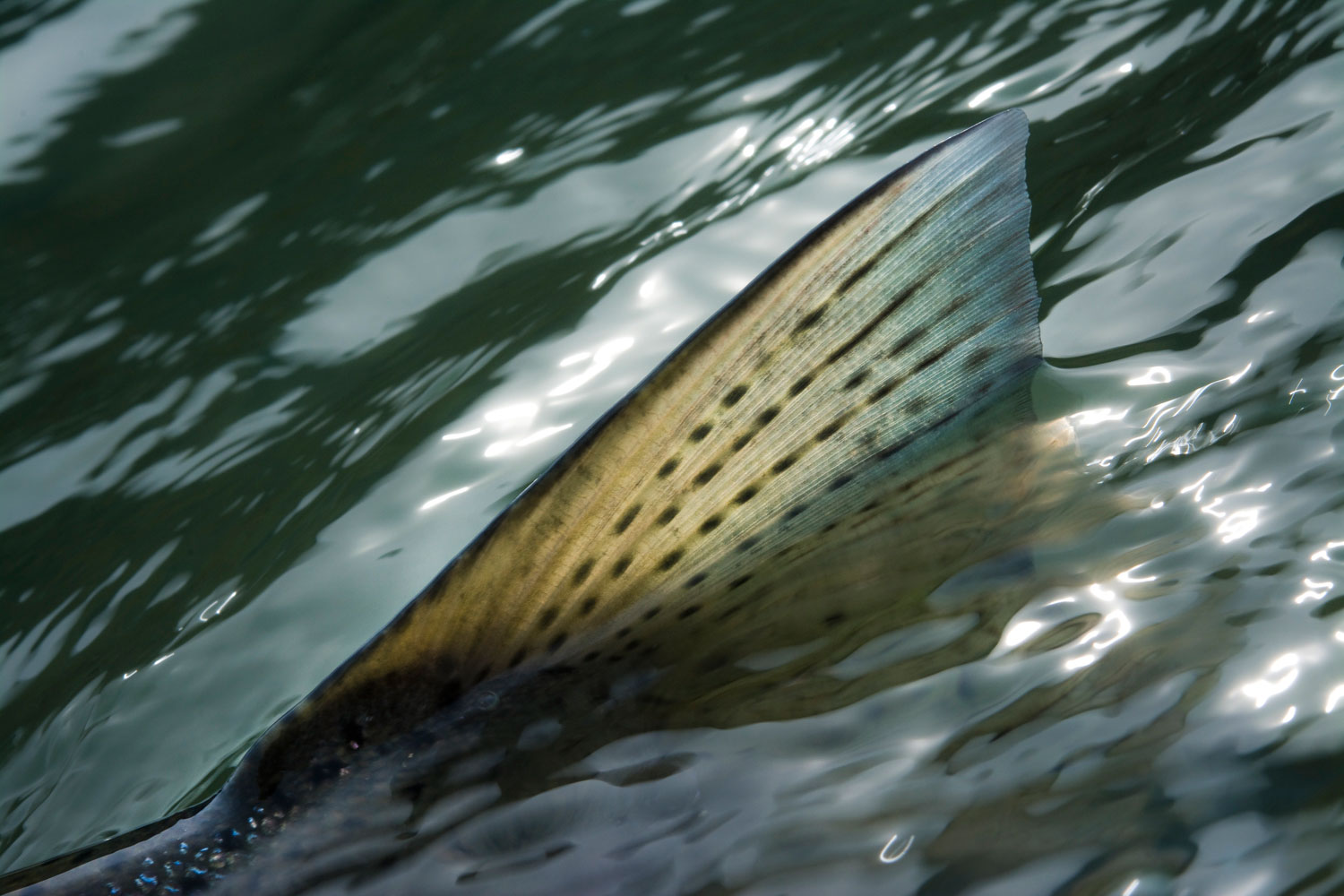
I DON’T KNOW IF THERE IS A FISH I GET MORE WORKED UP OVER THAN THE STEELHEAD.
What remarkable creatures they are, bridging the gap between freshwater and saltwater fly fishing. This fish was caught about a half mile from the salt in the Dean River. What a beauty.
Read More »Pothole Fish With John I Missed
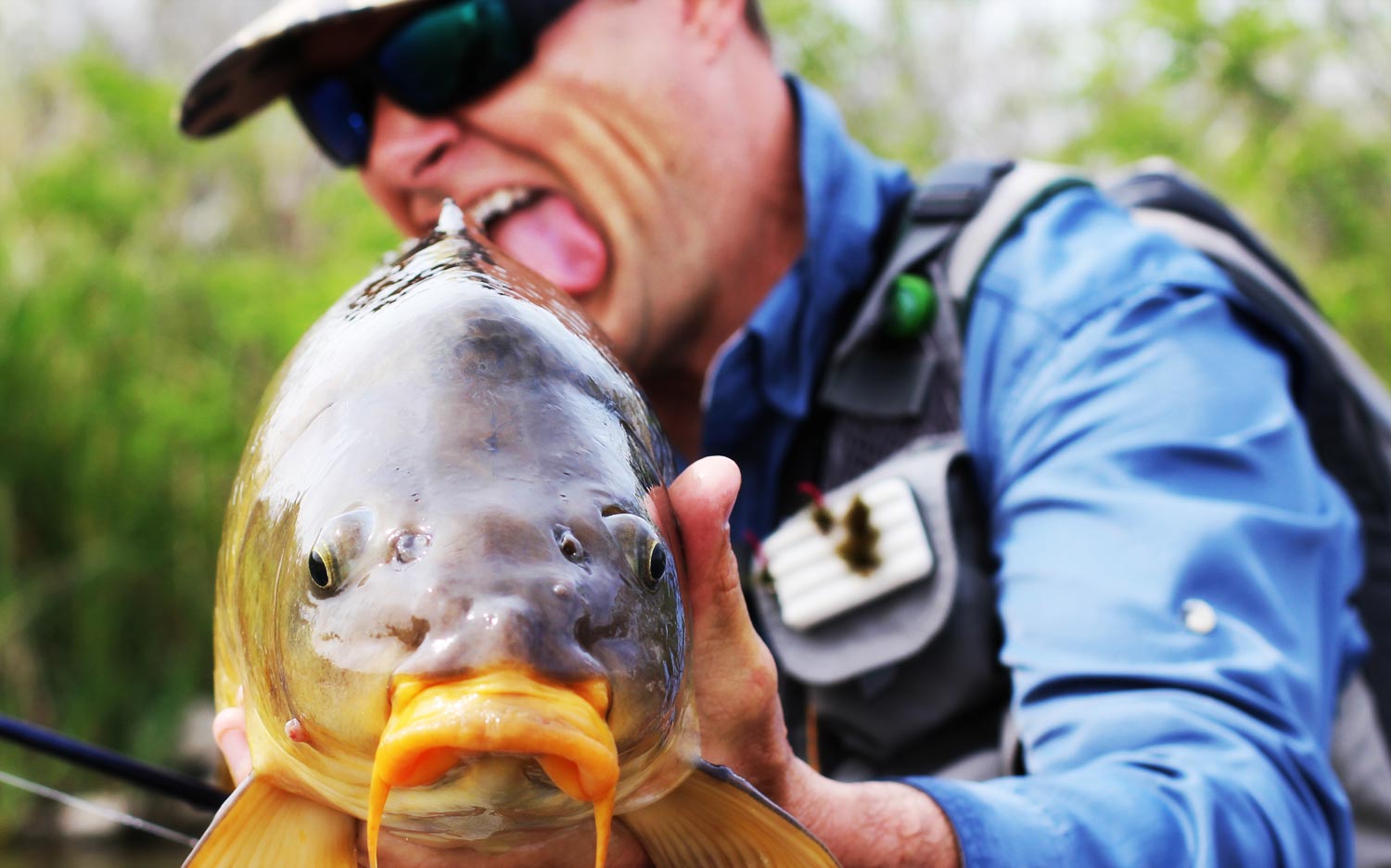
By Dan Frasier
IN SOME WAYS IT WAS THE SECOND DAY OF MY FOUR-DAY TRIP TO THE COLUMBIA RIVER.
In a more meaningful way, this was early on day one. My first day in Portland was spent doing one of those things that seemed worthwhile at the time, but in hindsight was just a day of fishing that didn’t happen. You know how priorities seem different in hindsight? Yeah, one of those deals.
Anyway, John “Montana” Bartlett had displayed his renowned graciousness and now we were on the water. I was ready for big fish and plenty of them. I’ve been known to catch a carp or two and, despite John’s warnings, it seemed pretty obvious that the Big C was just another carp-laden body of water waiting to be conquered.
We hit the road from John’s house early. He had a vague plan that involved a lot of “if they aren’t there then we’ll move onto the XYZ spot”. To be honest, I’d quit trying to keep a mental map. John speaks about the Big C like you do with an old lover; using allusions to past events, pet names for places known only to him and broken references to memories that are more feeling than fact. It didn’t matter anyway. If I ever repeated the names of the spots we fished, John would have hunted me down like Seal Team 6 and people would be left to ask, “Hey, whatever happened to that Dan guy?”
My first bout of nerves started as we entered the water on the first flat. Things here were different, but in an eerily recognizable way. My brain immediately grasped that the water looked like a carp heaven. Like something I’d seen before and recognized. Good water, good clarity, obvious feeding areas. And yet it was wholly different than what I was used to. The bottom was more like a moonscape than the mud flats I fish; piles of cobble and sharp volcanic rock with divots and craters in between.
The water itself looked like those translucent aquamarine glass shower doors. You could see through it very well, but it wasn’t colorless. It was colored with an opacity that you had to consciously try to look through instead of at it. It was like the Columbia gave you enough to make the carp fishing reasonable but no more.
A few steps in and the nerves subsided. We were thigh deep in good-looking water with fly rods. For me it seems that the familiarity of the activity of fishing quickly overcomes the unfamiliarity of a new location. This time was no different. It was just fishing, albeit in a storied and strange location.
John and I walked this submerged moonscape with the confidence that is natural at the beginning of a long fishing trip. John new he could catch every fish he saw and I felt confident that I’d either get my share now or learn quickly enough and have plenty of time left in the trip to get it later. We saw a few fish, had shots at a couple (which John let me take) and landed none on that first pass. That was alright, lotta fishing left to do.
We hit the end of the flat and John was ready to move. The Big C has more fishable carp water than a person can cover in a lifetime so there is no point dallying at a spot that you’ve already walked. We hopped out of the water and up the riprap. This is the steep riprap of large sharp stones that indicate significant human modification to a river. Great chunks of granite rise from the water’s edge at a steep angle for twenty feet. It’s treacherous walking and difficult fishing. From that position an angler can get great visuals on a fish, but that’s about all he has going for him. Casting from riprap that steep means your line sags and moves the fly well farther in than you expect. The fish tend to be very attuned to any movement above them on the rocks and the angle makes hooksets VERY difficult. Elevated fishing is a strange and diabolical kind of torture. It lets you identify more targets that are nearly impossible to catch.
Hell isn’t fishing without finding fish. Hell is fishing and finding huge numbers of uncatchable fish.
Read More »The CDC Blood Midge
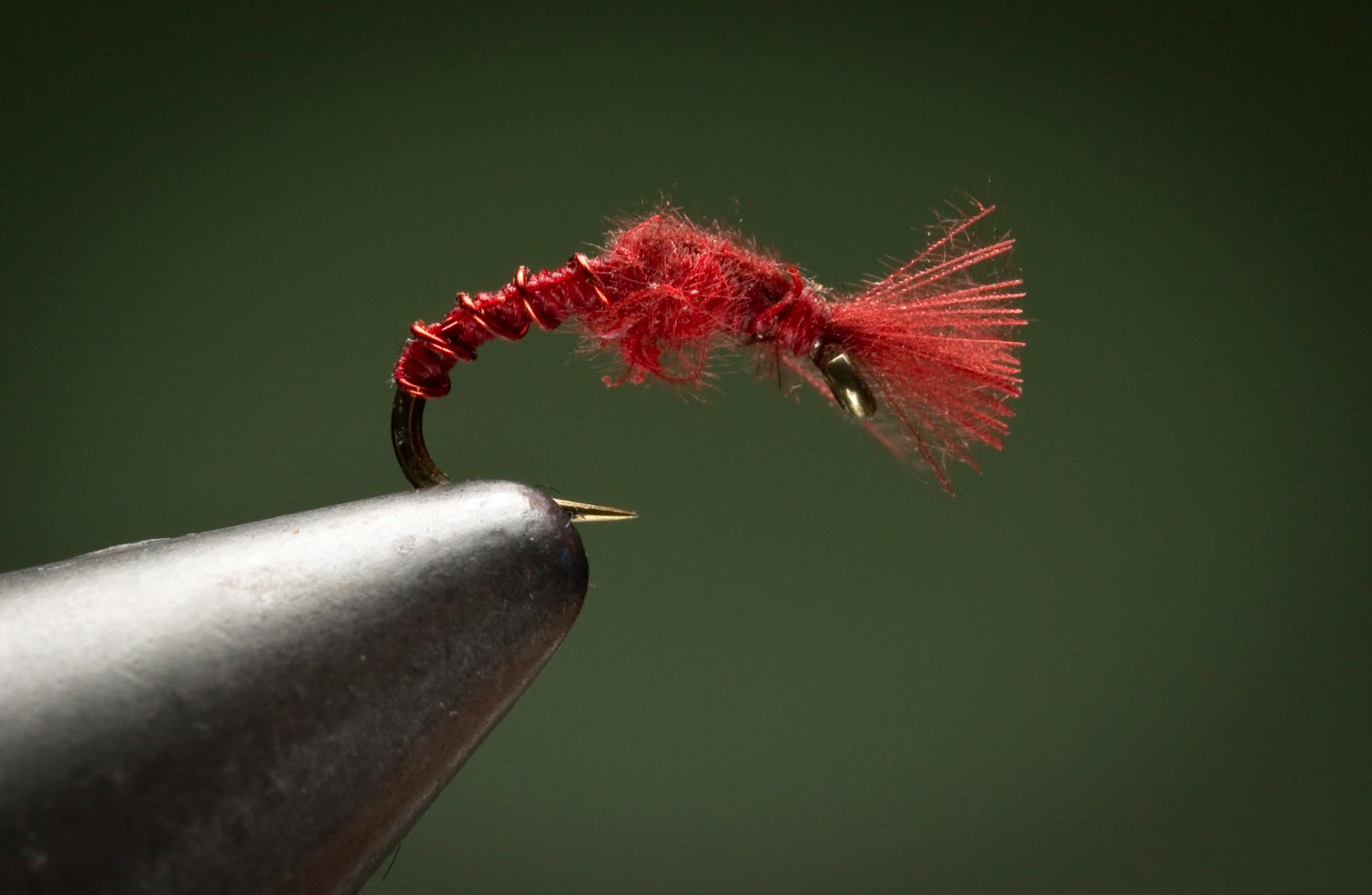
MIDGE PATTERNS CAN BE REMARKABLY EFFECTIVE FOR TROUT.
Depending on how you count them there could be over a thousand species of midge. That’s a lot of choices for the discerning trout. There are almost as many choices for the angler and a midge obsession can easily get out of hand.
I find that more times than not a Blood Midge will do the trick. I spent a morning on the Colorado River one April and caught twenty-four brown trout on a blood midge without moving my feet. Trout are naturally attracted to these red patterns even when they are not an exact match for the naturals. I’ve tied many different Blood Midge patterns but my current favorite is the CDC Blood Midge. The power of CDC can not be overestimated. This is a great pattern and very easy to tie.
Watch the video and learn hoe to tie The CDC Blood Midge.
Read More »Fast Action Fly Rods And The Fly Lines That make Us Love Them
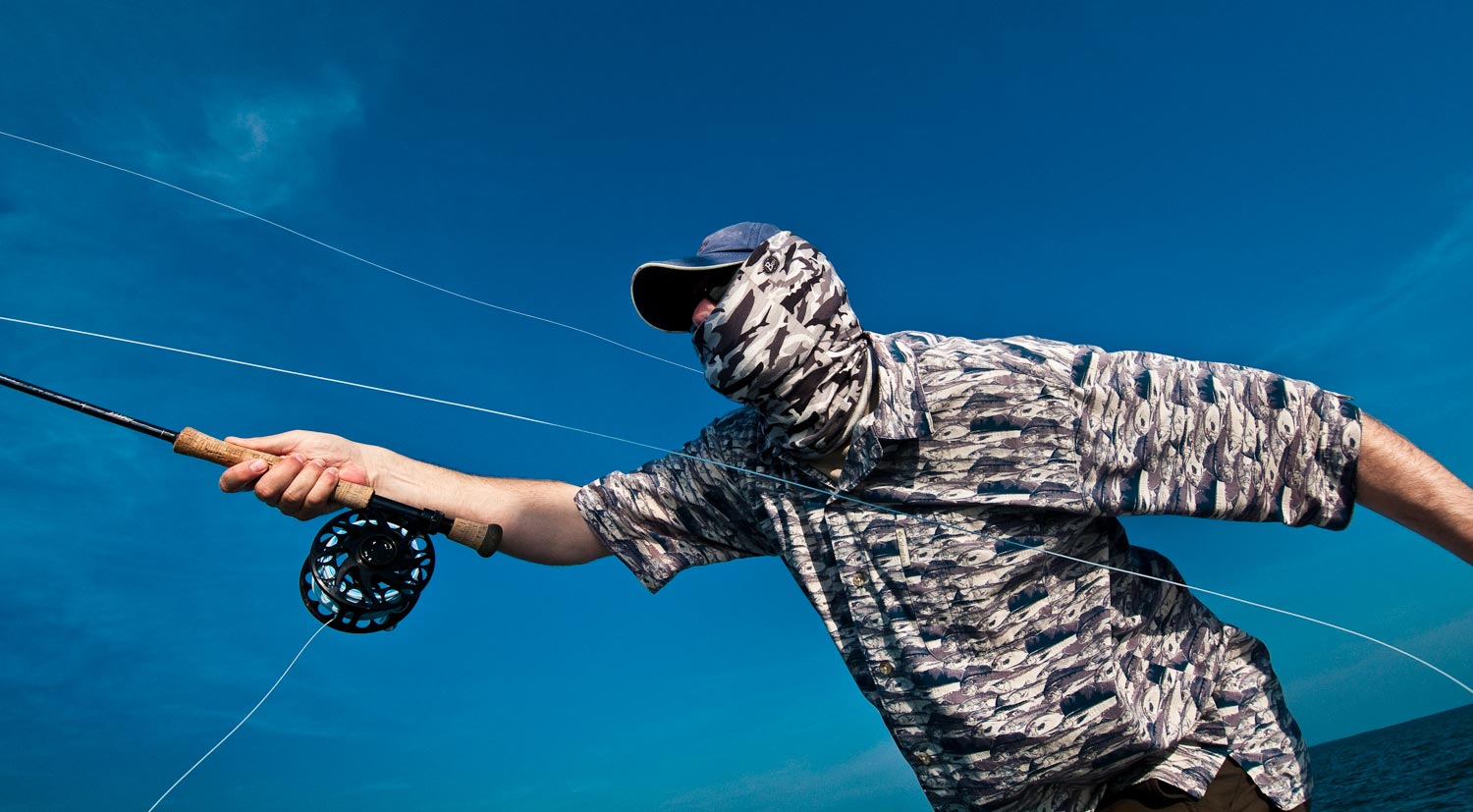
Selecting the right fly line for your fast action fly rod isn’t as easy as it used to be.
I have found myself having this conversation with three different anglers this week. That’s generally a good sign that it’s time to write something on the topic. There’s plenty to write on the topic of choosing a fly line. Fly lines have become increasingly specialized and more numerous. You can buy a line for any species of fish alive, for any style of fishing, for specific destinations, and now Winston has started selling lines specifically for their rod. A strategy I’d be shocked to not see adopted by other companies.
The decision is further complicated by the action of today’s fast action rods. Some of these modern hotrods can be pretty finicky about the lines they throw. The exact fly line which works for you and your fly rod is best determined by trial and error, but I’m going to try to eliminate some of the variables and get you started in the right direction.
2 Kinds of fast.
When it comes to fast action fly rods, it’s important to understand what makes your rod fast. The term “fast” refers to the recovery rate of the rod. That’s the time it takes for the rod to return to straight from a flexed position. The less time it takes to recover from the flex, the faster the action.
Traditionally, “fast” has meant “stiff”. The way rod designers have made fly rods faster has been to throw graphite at the problem, adding material to make a stiffer rod. These rods became so stiff that many anglers struggled to load them. Line manufacturers responded by making heavier fly lines. Before long, experienced anglers started to realize that they were putting 6-weight lines on their 5-weight rods and started to ask, “why are we calling this a 5-weight, anyway?”
A fair question, and as more anglers grumbled about it, rod companies started to respond by making fly rods with more accessible actions. A new type of fast action rod started to emerge. These rods had fast recovery rates, not because they were stiff but
Read More »Grass Roots Fly Fishing – People Making A Difference

by Louis Cahill
Is it time you gave something back?
You can’t go to school for fly fishing. You can take some classes or workshops, here and there, but most folks learn to fly fish one of two ways. On their own or from a friend or family member. Either way it’s a tough learning curve. Information is pieced together from tips and suggestions, successes and failures. Some anglers hire guides or casting instructors to teach them but that’s not an option for everyone. What if there was a better way?
Well, there is. There are local clubs and groups that take on the mission of educating anglers and creating a community around our love of the sport. Some are better than others and some are great. At their best, these groups do more than share information. They share the passion, the ethics and the camaraderie of fly fishing. I’m going to tell you about one of them.
I didn’t know my life was about to change when I met Scott MacKenzie. We fished together, and hit it off right away but I had no idea what a positive influence he would be, for me and others. Scott is just one of those guys who radiates positive energy. He came along at a time when things were pretty tough at G&G world headquarters. It is not an exaggeration to say there would be no Gink and Gasoline today, if not for Scott.
He and I fished together in the Bahamas, on one of my bonefish schools. Scott had been a fly fisherman for many years but had never tied flies. I taught him to tie a bonefish fly and when he caught fish on it the next day, he was hooked. From that point forward he was all about fly tying. I’d get a couple of text messages a day with questions or photos of flies. Soon he asked me, “Would you teach me to tie?”
“Of course!” I answered.
“While you’re at it, would you mind teaching six or eight other guys?” He followed up.
I agreed and Atlanta Fly Tying was born. Scott threw down his own money and bought eight complete tying setups. Eight Regal Revolution vises, eight sets of Rising tying tools, thread and materials all in lots of eight and scheduled the first class. We met at Scott’s office. He reached out to The Atlanta Fly Fishing Club, another great organization, and they spread the word that there would be free tying classes, open to anyone.
That first night we had about six guys show up. We sat around Scott’s conference table to tie redfish flies, because Scott and I were going redfishing in a couple of weeks. I dove right in to the instruction. We were cranking along when Scott brought up G&G.
“Here comes the pitch!” One of the guys blurted out.
I was floored. “I’m sorry man,” I told him, “I don’t have a pitch. I just run a fly fishing web site, and it’s free.”
It never occurred to me that these guys were sitting around that table thinking we had something to sell them. I should have realized. That is the kind of world we live in, where any act of generosity, no matter how small, is suspect. Maybe I’m stupid for not having something to sell them. If I had a fly shop or a guide service, maybe I would, but all Scott and I had to offer was knowledge and enthusiasm. Those guys wound up
Read More »Georgia Man Catches Trout On Car Key, But Why?
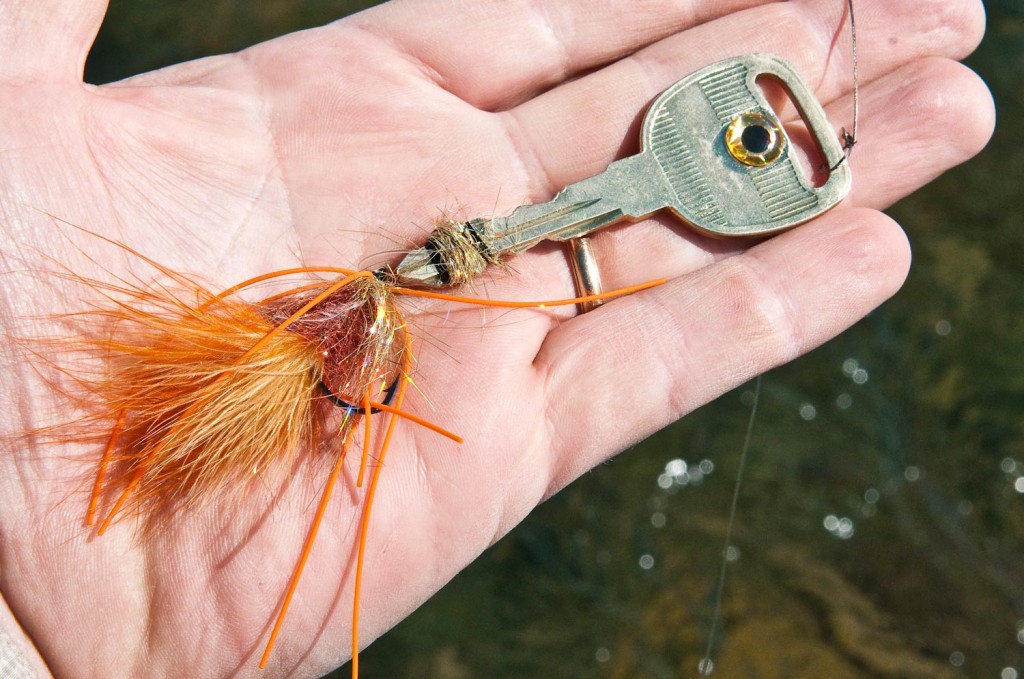
By Louis Cahill
WHY IN THE HELL WOULD YOU FISH THAT? I’M GLAD YOU ASKED. TO PROVE A POINT.
For some reason this year I have run into more anglers with attitude than usual. Ranging from the dry fly purest who think they walk on the water rather than fish it, to the Bonos of fly fishing who keep a sharpie handy for a quick autograph. Here’s an example.
I was on a photo shoot a while back on the Henry’s Fork. I had a few minutes to fish and frankly, I needed a fish to photograph, so I asked the guide for a rod. He gave me a set up with a Chernobyl Ant, the fly everyone else was using to NOT catch fish. I didn’t have my gear so I ask if he had any streamers. The reply I got brought steam out of my ears. “This is the Henry’s Fork and we don’t do that here”. Rather than launch into a diatribe on what horse shit that is, I explained that this was my job and I needed a fish and may I please have a streamer. Within a few casts I had my fish. The guide was clearly irritated and insisted that it meant nothing.
I was talking, ok bitching, about this narrow view of fishing to Kent, over a few beers, when he challenged me to come up with the most f¥€ked up thing I could catch a fish on. After a few ideas we decided on a car key. I liked this because I cary a key chain with way too many keys. So I picked out a key and tied on a hook with a marabou tail. To further infuriate the purest I chose
Read More »How To Make Your Fly Rod Cast Like A Dream
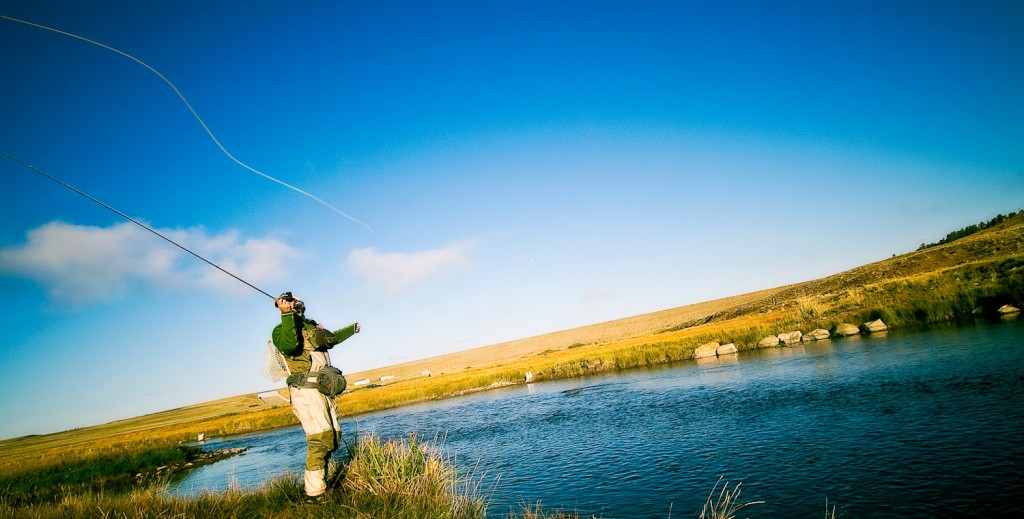
What Fly Line Matches Up Best With Your Fly Rod?
It always amazes me that there’s very little talk in the industry about how important it is to match your fly rod with the appropriate fly line. My recent visit to the ITFD Fly Fishing Show in New Orleans, I witnessed on more than one occasion, fly rod company’s matching their fly rods up with what appeared to be the wrong fly lines. If you spool up the wrong fly line on your reel, that $700 fly rod you just purchased will end up feeling awkward, and won’t perform the way the fly rod designer intended it to. Below are some quick tips on how to match your fly rod with the correct fly line so it ends up casting like a dream.
Fast Action Fly Rods
Stiff, fast action fly rods require fly lines with a more aggressive head design for optimum rod loading and casting. Since fly rods are generally meant to load at 25-30′ of fly line out the end of the rod tip, anglers often find it difficult to load fast action fly rods, particularly at short distances, unless they’ve matched their rod with the appropriate fly line. Both Rio and Scientific Anglers manufacture fly lines specifically for fast action rods.
Fishing the Fall, What You Should Know About Sinking Fly Lines
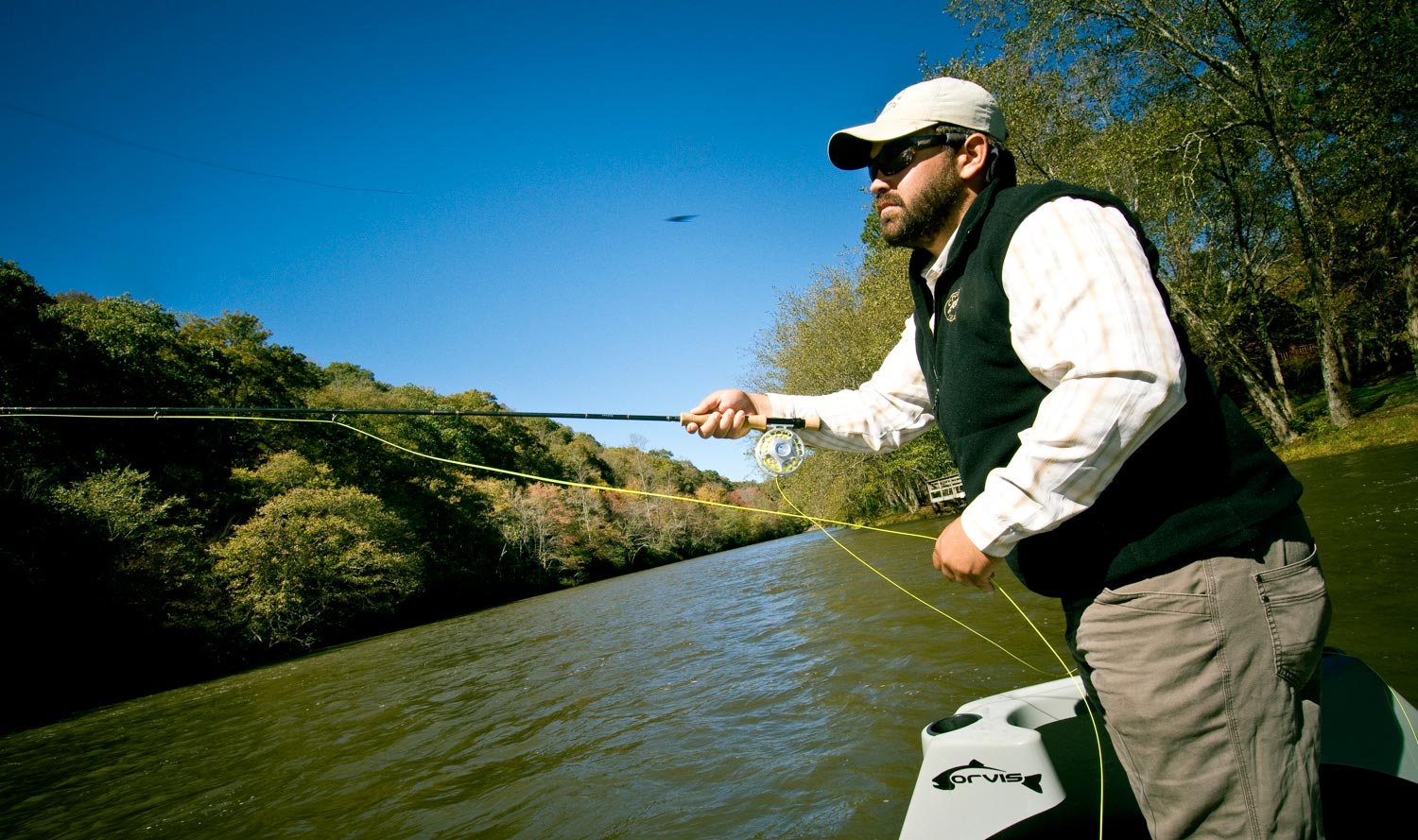
By Garner Reid
A GOOD PORTION OF MY FLY FISHING INVOLVES THROWING SOME SORT OF A SINKING FLY LINE.
Realistically, half of my time on the water involves streamers and sinking lines at least for some part of the day. If I am not out on the water guiding for streamer-eating fish like stripers, I’m in the fly shop talking about them.
I have come to the realization that there is some mystery for most anglers when it comes to choosing which sinking fly line will suit their needs. The selection of sinking lines on the market today is as vast as the waters where we chase our quarry. Today fly anglers can effectively target fish at any level in the water column, given the right combination of rod, fly line, and fly pattern.
When chasing large predatory fish like bass, stripers and big brown trout in moving water you have to get down deeper than floating lines allow. With all of the options and versatility, it is easy to get confused. I have put together some thoughts to help you choose the right line configuration to effectively get into fish.
Fly Weight vs Sink Rate of line
After several seasons experimenting with different types of sinking lines and various streamers, I have found a number of variables which I can control to have a productive day on the water. A big factor in my success has been dialing in the correct weight for the fly with the sink rate of the line.
For most fishing conditions, my primary concern is
Read More »Organizing Your Bonefish Fly Box Makes For A Better Day Of Fishing
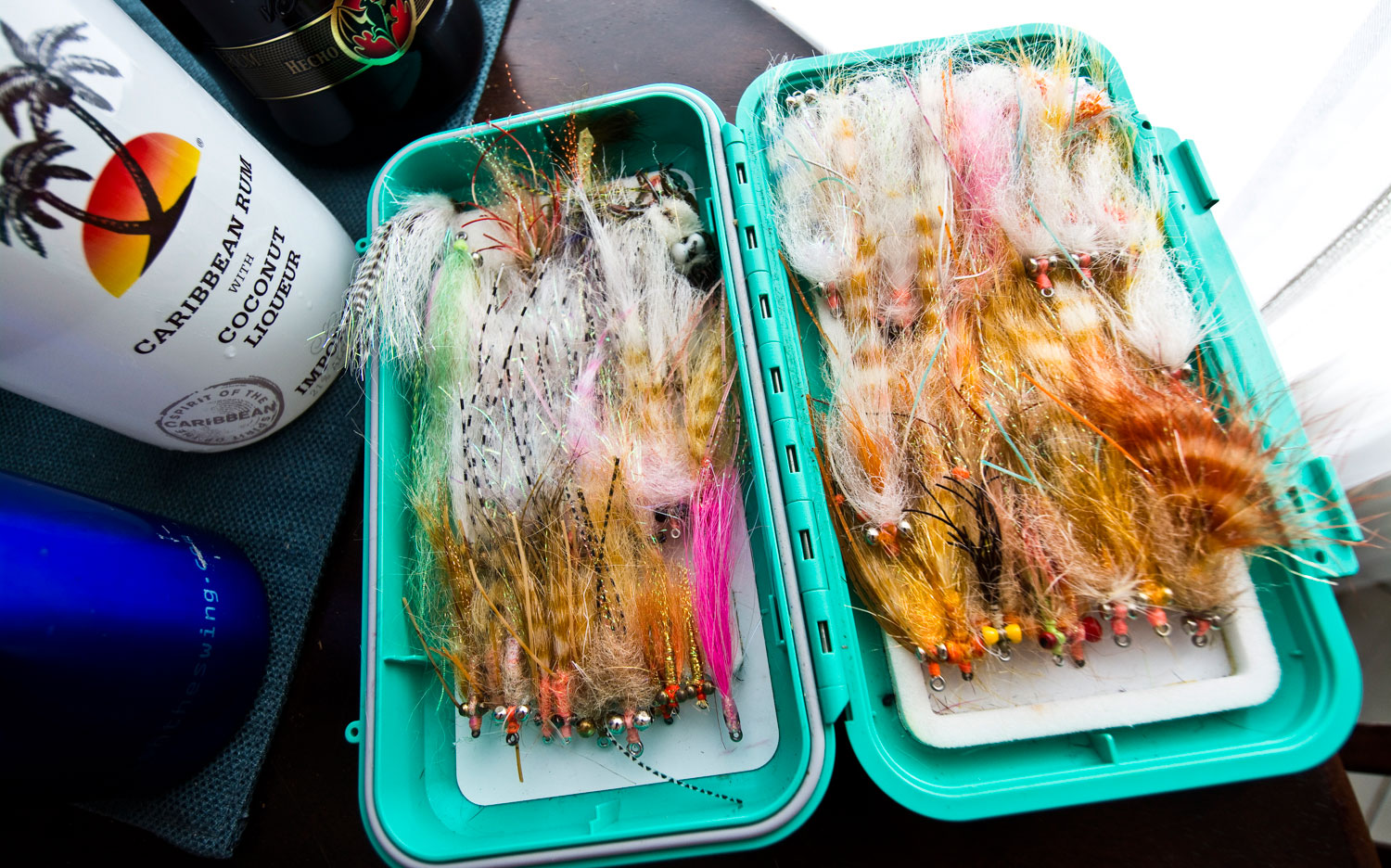
OPTION PARALYSIS EATS UP VALUABLE FISHING TIME.
I’ve found myself, more than once, staring into my fly box as if I’d wandered to the refrigerator in the middle of the night, with no idea why I was there. That’s fine, unless you’re surrounded by feeding bonefish and your guide is wailing in tongues. Even if your not under pressure to make a quick fly choice, having your flies organized in a logical fashion will help you choose the right fly for the conditions and that means catching more fish. Here are some tips on how I organize my bonefish box and how I use that organization to make better fly choices.
Keep It Simple
Bonefishing is not generally a match-the-hatch situation. Bonefish are highly opportunistic and presentation usually trumps pattern. I know guys that carry a thousand flies on the flats boat. They might fish three of them in a day. I keep it to one box. I probably cram a hundred flies into it but that one box has everything I need.
Making Smart Choices
When paring down your fly selection it’s important to understand
The Magic of Soft Hackles
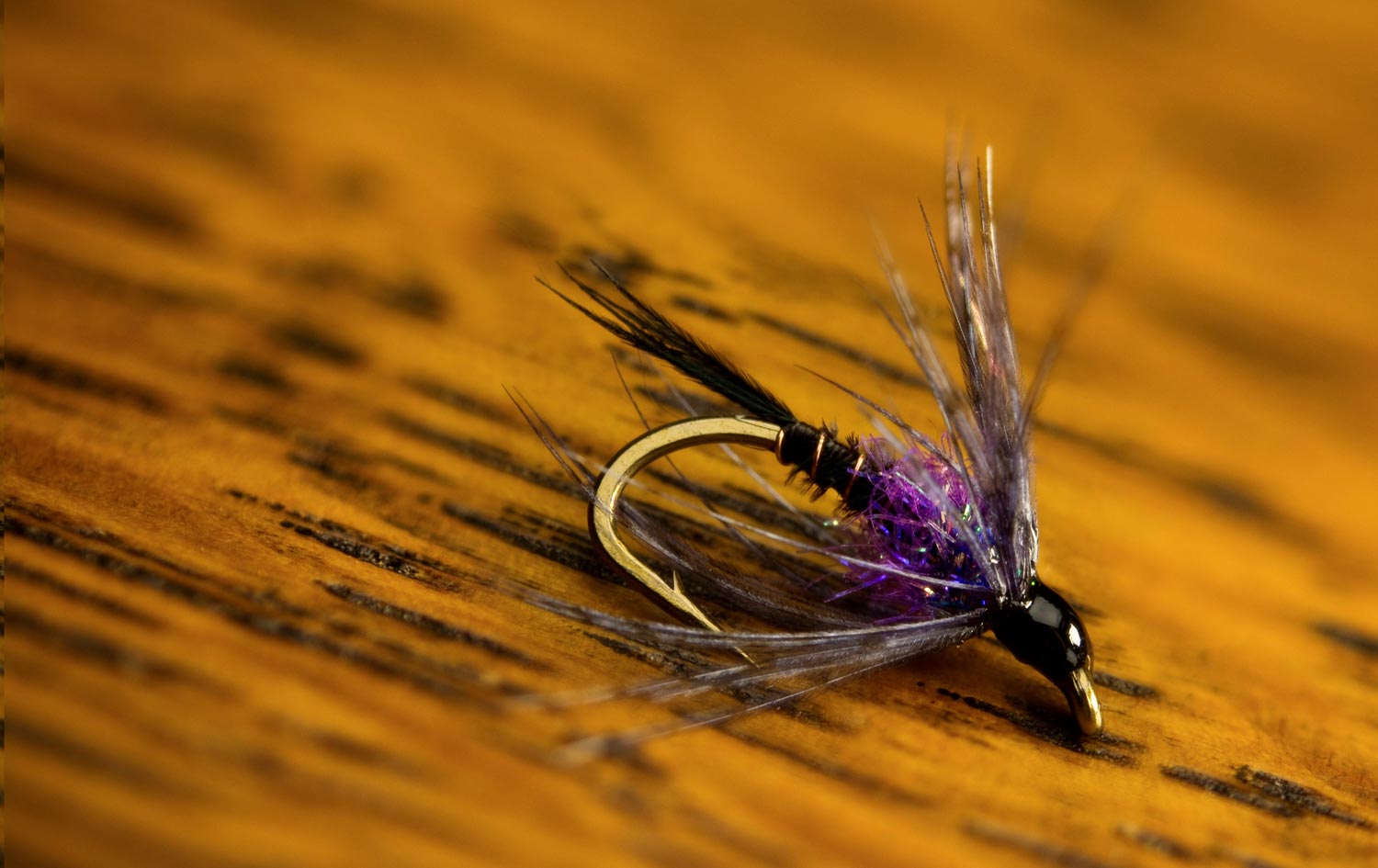
SOFT HACKLES ARE THE SHARKS OF THE FLY BOX.
Like the shark, the soft hackle is one of the oldest of its ilk, and like those ancient predators, it has evolved very little from its inception. Like the shark, it is a deadly design that could not be improved upon. Take, for example, the Kebari flies used by tenkara anglers for hundreds of years. Basically Soft Hackles with a reverse hackle. So effective, that traditional tenkara anglers only fish one pattern. Many modern fly anglers overlook traditional Soft Hackle patterns that are as effective today as ever.
There are two primary reasons for the effectiveness of the soft hackle. For starters, it’s the ultimate impressionistic pattern. It looks like almost everything on the aquatic menu. A fish who is looking for something specific is very likely to see it in a soft hackle. The second reason is, there’s just no wrong way to fish one. If you struggle with getting a drag free drift, a soft hackle is a very forgiving pattern. As long as it is in the water, it will produce fish.
FISHING SOFT HACKLES
As I said, there is no wrong way to fish these flies, but there are some proven tactics you can employ. For starters, dead drifting the fly as a nymph is never a bad plan. The Soft Hackle is as effective in this role as any pattern. That said, the dead drift does not take advantage of some of the pattern’s unique properties.
Perhaps the most common and most productive presentation for a Soft Hackle is the swing. The hackle has a tendency to trap an air bubble making the fly a natural emerger pattern. There are tying techniques, which I will go into, that enhance this effect. When fished deep and swung to the surface, the glowing air bubble inside the hackle is more than any trout can resist. One of my favorite ways to rig this pattern is to drop it about sixteen inches behind a Wooly Bugger with some weight in front of the Bugger. Drift the team deep through a run then lift them to the surface or quarter them down and across and let then swing and hold on.
When fishing from a boat, it’s very effective to cast a Soft Hackle straight across the current and retrieve it slowly, about four inches at strip. A hand-twist retrieve works well. This is also effective when teamed with a Bugger. Even more fun,
Read More »